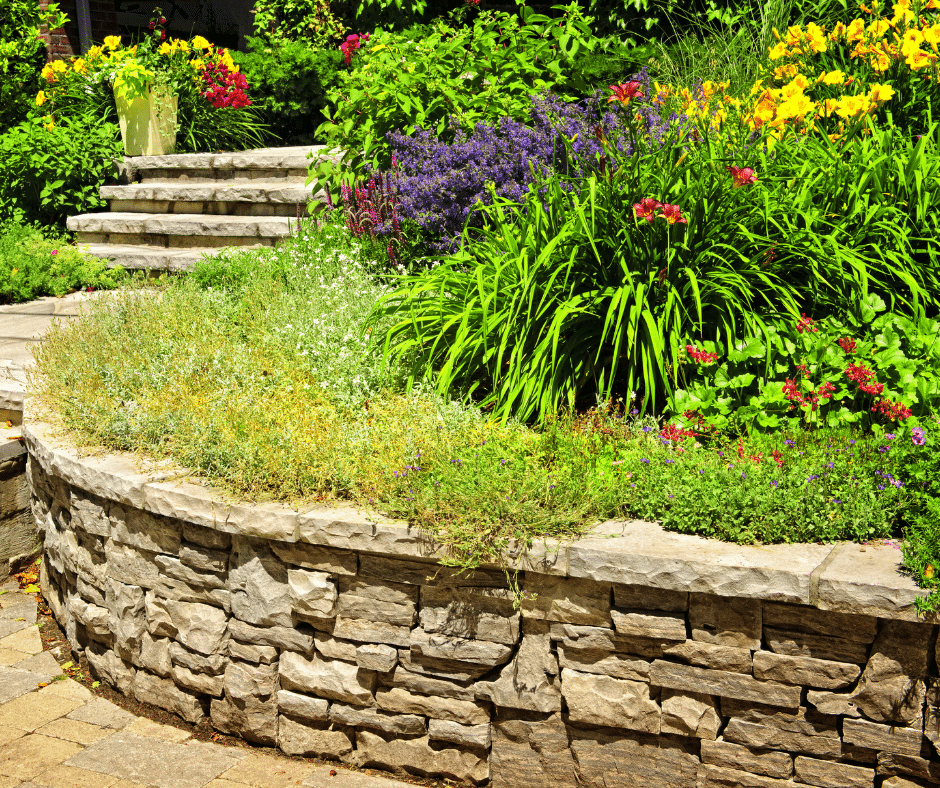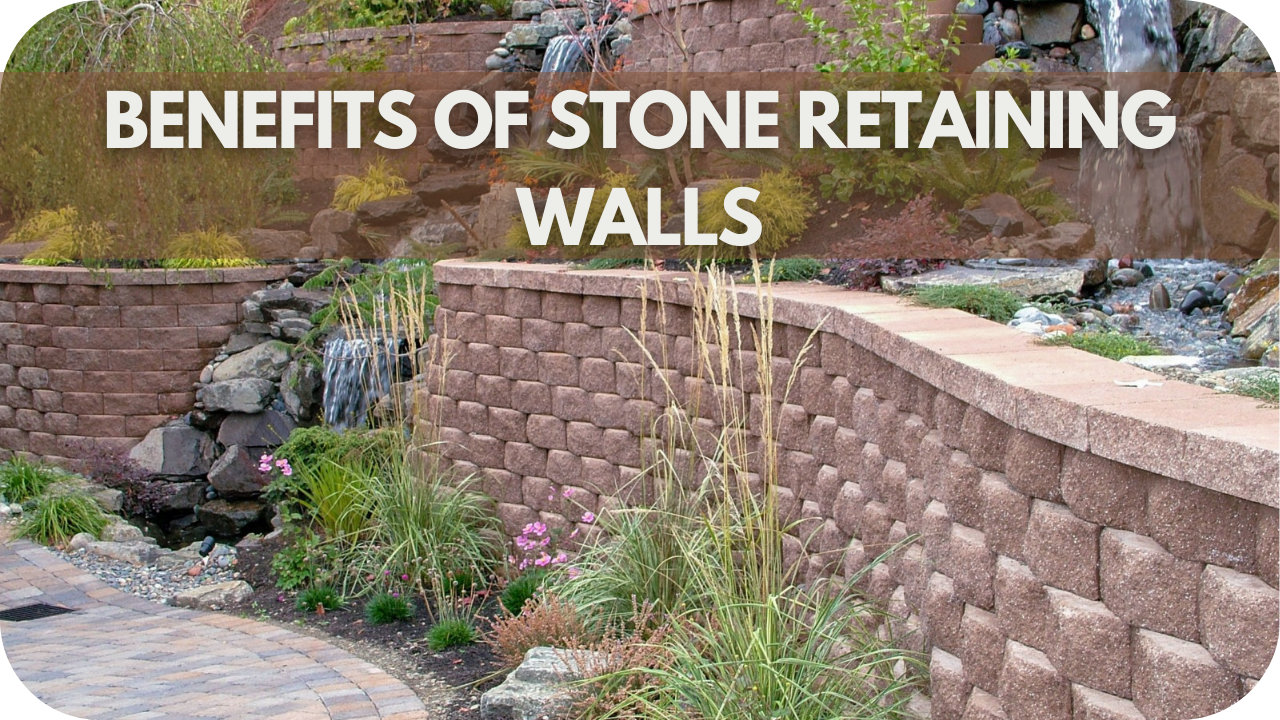OKC Precision Retaining Walls: Functional beauty for Oklahoma landscapes
OKC Precision Retaining Walls: Functional beauty for Oklahoma landscapes
Blog Article
The Necessary Overview to Comprehending the Performance of Retaining Walls
When it comes to taking care of sloped landscapes, retaining walls are vital. What types of retaining walls are available, and how do you pick the right materials?
What Are Retaining Walls and Their Objective?
Retaining walls are vital structures created to hold back dirt and protect against erosion, particularly on sloped landscapes. When you believe regarding a preserving wall, consider its function in handling water runoff, which can wear down dirt over time.
In addition, retaining walls can produce usable rooms in your lawn. By leveling out a sloped location, you can get more useful outdoor area for horticulture, outdoor patios, or play locations. The layout and products you select can improve your residential property's looks, making it visually appealing.
Eventually, comprehending the purpose of retaining walls helps you appreciate their value in landscape administration (OKC Precision Retaining Walls). They not only shield your home however likewise add to the overall charm and performance of your exterior room
Kinds Of Retaining Walls: An Introduction
When it comes to taking care of dirt and water drainage in your landscape, understanding the various types of retaining walls can assist you make an informed choice for your building. Gravity walls count on their weight to hold back dirt, making them a strong choice for smaller slopes. Cantilever walls, on the other hand, use a lever-like design, which permits them to sustain a lot more considerable tons with less material.
Trick Products Utilized in Retaining Wall Building
To create a sturdy and reliable retaining wall, selecting the right products is necessary. You'll discover that concrete is a prominent option due to its longevity and toughness. Precast concrete obstructs offer flexibility in style, while put concrete gives a seamless appearance. If you favor a more natural look, stone or brick can add aesthetic allure and blend with the landscape.
Wood is another alternative, specifically for smaller walls, however maintain in mind it might not last as long due to degeneration. Steel and gabion walls, which utilize cord mesh filled with rocks, are likewise reliable for particular situations.

Layout Considerations for Reliable Retaining Walls
Designing an effective retaining wall involves cautious consideration of several essential elements, as the wall needs to hold up against both vertical and side pressures. Evaluate the soil type and its properties; cohesive dirts act in different ways than granular ones. You'll additionally wish to identify the height of the wall surface, as taller walls need even more robust layout options.
Next, think about drainage. Correct drainage protects against water buildup behind the wall surface, minimizing pressure and potential failing. Integrate weep holes or water drainage pipelines for efficient water management.
Additionally, assume regarding the materials you'll make use of. Various materials, like concrete, stone, or timber, deal varying strengths and aesthetic appeals.
Lastly, do not ignore neighborhood guidelines and codes. They typically dictate style criteria and building and construction methods. By addressing these factors to consider, you can guarantee your retaining wall surface is not just practical yet likewise durable and risk-free.
Applications of Retaining Walls in Landscape Design and Building
Retaining walls offer a necessary role in both landscape design and building and construction, as they assist take care of changes in altitude and prevent dirt erosion. In landscaping, you can utilize them to produce attractive terraced gardens, allowing you to maximize your outdoor room while adding aesthetic interest. They also help specify areas, such as paths or blossom beds, enhancing your landscape's general design.
In building and construction, retaining walls give security to structures built on sloped land, ensuring safety and security and toughness. They're frequently used in highways and commercial buildings to manage earth movement and drain effectively. By stopping dirt from shifting, retaining walls safeguard structures and keep the stability of your building tasks.
Whether you're wanting to improve visual charm or warranty architectural security, retaining walls supply sensible solutions that can significantly benefit your landscape and building ventures. Accept their adaptability to attain both visual and useful objectives.
Upkeep Tips for Long-Lasting Retaining Walls
To maintain your retaining walls in wonderful form, normal assessments and timely repair work are vital. You likewise need to guarantee proper water drainage remedies to avoid water build-up, which can deteriorate the structure. Managing plant life around the walls will certainly assist maintain their integrity and expand their life-span.

Normal Examinations and Fixings
While you might believe your retaining wall can stand solid by itself, normal assessments and timely repair work are essential for its durability. Check your wall surface at the very least two times a year for fractures, protrudes, or indications of wear. Look for any kind of shifting in the soil bordering the wall, as this can show deeper problems. If you spot an issue, address it immediately; a little split can rapidly turn right into a significant architectural failing. Fixing harmed sections without delay can save you money and protect against comprehensive damages down the line. Additionally, keep the location around the wall surface clear of debris to stay clear of moisture accumulation. By being positive concerning evaluations and repair services, you'll assure your retaining wall stays strong navigate to this site and useful for many years to find. this link
Appropriate Drain Solutions
Reliable drainage is necessary for keeping the honesty of your retaining wall surface, as water accumulation can bring about significant structural problems. To guarantee proper drainage, install weep holes at routine intervals along the wall. These small openings permit excess water to run away, protecting against stress build-up behind the wall. You ought to also consider including a water drainage pipeline at the base of the wall, directing water far from the framework. Usage crushed rock backfill to advertise drainage and reduce soil saturation. Frequently check and clear any kind of particles from drain systems to maintain circulation. By carrying out these services, you'll enhance the long life and security of your retaining wall, guarding it versus potential damages triggered by water accumulation.
Plant Life Administration Strategies
Healthy plant life can play an important function in the long life of your retaining wall surface. Start by choosing deep-rooted plants that assist stabilize the soil without causing stress on the wall.
It's vital to prevent overwatering, as excessive wetness can wear down the wall's foundation. By applying these greenery monitoring methods, you'll support your retaining wall surface's sturdiness and enhance the bordering landscape's charm.
Common Problems and Solutions for Retaining Walls
When it pertains to retaining walls, soil erosion and drain problems can cause major headaches. You need to guarantee your wall is effectively designed to protect against disintegration and has an efficient water drainage system in location. Let's discover some common problems and their options to maintain your retaining wall sturdy and useful.
Dirt Erosion Prevention
Soil disintegration can be a considerable helpful site challenge for retaining walls, specifically if not correctly resolved. When dirt wears down, it can undermine the wall's security, leading to possible failures. By taking these proactive steps, you can substantially boost the longevity and efficiency of your retaining wall surface versus dirt disintegration.
Drainage System Significance
A trustworthy drain system is vital for the effectiveness and long life of retaining walls. Preserving proper drainage not just secures your retaining wall yet likewise guarantees the bordering landscape stays stable. By remaining positive, you can avoid pricey repair services and prolong the life of your retaining wall surface.
Often Asked Questions
Just How Do Retaining Walls Affect Water Drainage Systems?
Retaining walls can substantially influence drainage systems by redirecting water circulation. They prevent dirt disintegration and handle groundwater levels, making certain stability. If you're intending building, take into consideration exactly how they'll interact with your water drainage design for excellent results.
Can Retaining Walls Be Mounted on Slopes?
Yes, you can mount retaining walls on slopes. They assist stabilize the soil and prevent erosion. Simply guarantee appropriate drainage and select the right materials to take care of the pressure from the dirt behind the wall.
What Is the Life expectancy of a Typical Retaining Wall?
A regular retaining wall lasts around 20 to 50 years, depending upon products, maintenance, and environmental problems. You should consistently examine it to ensure its long life and address any type of concerns promptly to avoid expensive fixings.
Are Allows Required for Building Retaining Walls?
Yes, you usually require permits for developing retaining walls. Inspect your neighborhood building regulations and regulations to guarantee compliance. It's crucial to protect the appropriate permissions before starting your project to avoid prospective fines or problems.
Exactly How Do Retaining Walls Effect Residential Or Commercial Property Value?
Retaining walls can positively affect your home worth by improving aesthetics, avoiding erosion, and creating usable outdoor space. OKC Precision Retaining Walls. They also demonstrate good land monitoring, making your building extra attractive to potential customers out there
Report this page